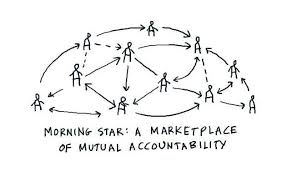Marvel Studios has successfully managed to create a universe on screen that millions of people have been craving to visually experience since 1940. With the utmost secrecy, Marvel Studios has planned out 2 phases of Super Hero flicks into the future and they hope to create an abundance of unified story telling for many years to come.
The after credits sequence, although now synonymous, with this particular movie genre was not really a thing until the world got to see the end of Iron Man. In Iron Man we were revealed Samuel Jackson in a black trench coat and an eye patch; whom the die hard fans understood was Nick Cage the leader of S.H.I.E.L.D. otherwise known as the man to unite The Avengers. This was the quintessential moment in defining what Marvel was planning to do and how they were deciding to manage their properties. This was a huge leap when it came to the movie business as we’ve never seen an intertwining of such hugely successful properties before.
All of these plans are based in secrecy as the blogs are a huge element to the hype and criticism of each Marvel film released to the public. With the giant enthusiasm by fans breeds very high expectations for film creators. The strategy for Marvel is to find the best talent in the business in order to appease the vision all fans have shared of visual spectacles with heart.
Marvel strategically reveals their plans for the future by way of Comic Con as extremely eager comic books fans await to see if their favorite super hero will be played by the caliber of actor they desire or if the film will be in the right hands of a suitable director. They often listen to fan opinion in the blogs when it comes to their hiring choices and are highly motivated by fan desires. This relationship between the studio and their audience is fairly unique as Marvel relies on anticipation for much of their success. Blogs, big reveals from comic conventions, events in the comic books, and after credit scenes add fuel to the immense burning fire Marvel Studios masterfully sustains.
POSTER FOR AVENGERS II: AGE OF ULTRON
 http://www.mtv.com/news/wp-content/uploads/2014/07/avengers-age-of-ultron-collage.jpg
http://www.mtv.com/news/wp-content/uploads/2014/07/avengers-age-of-ultron-collage.jpg
Kevin Feige, the architect of the Marvel Cinematic Universe and Marvel Studios have had immense success. Avengers alone gained $1.5 Billion worldwide (http://www.boxofficemojo.com/franchises/chart/?view=main&id=marvelcomics.htm&sort=studio&order=ASC&p=.htm) and Avengers II: Age of Ultron is expected to surpass that with the incredible amount of anticipation behind the upcoming film. The studio has crafted a sophisticated formula to build an audience even before the trailer for the movie is released and we can all see it’s paying off.
There are clearly a lot people invested in the planning of this cinematic universe; from the fans to those behind the scenes creating the film. Knowing this, do you believe the super hero genre is here to stay? Why/Why not?
Marvel Studios is creating programs for Netflix featuring heroes like Daredevil and Luke Cage; would you like to see the Marvel Cinematic Universe continue to expand or do you feel there is a ceiling to the genre?
http://www.wired.com/2013/08/kevin-feige-marvel-dc-movies/all/








